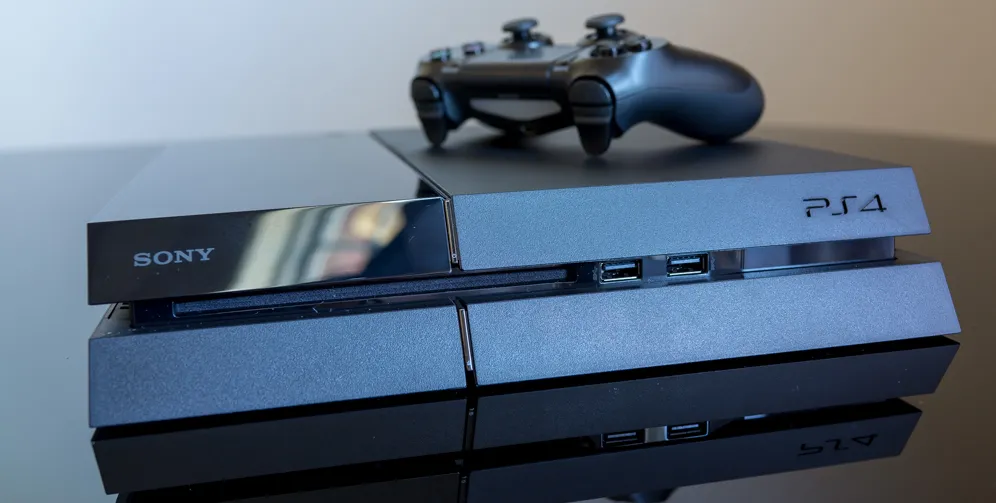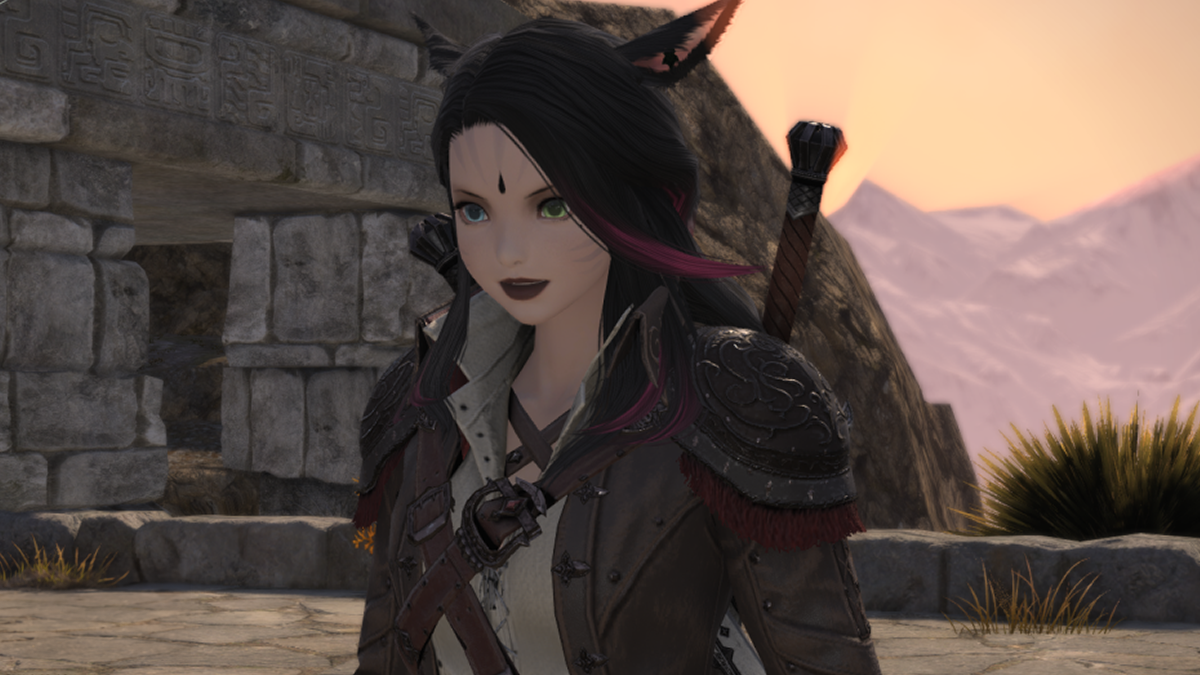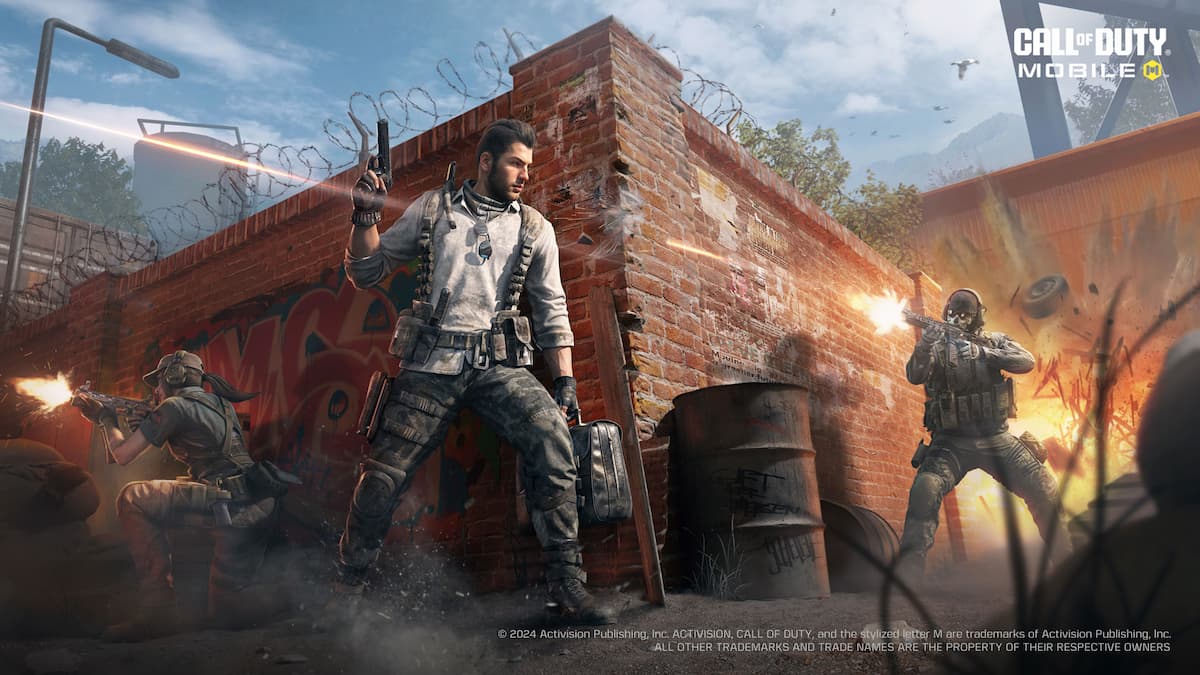Investing in your future
Remember daydreaming about a system that would let you buy and download games online, and then let you share your experiences socially? There was a day when the concept seemed so far off, but now that system is finally here. We’ve been talking about Sony’s next game console for years, so it feels kind of weird to actually have one now.
The PS4 is a blend of technologies we expected and features we didn’t. It’s a clear step forward from where the PlayStation brand has come, and a statement on where Sony thinks games are going. It’s less about what it is and more about what it does.

PS4
Manufacturer: Sony Computer Entertainment
Release Date: November 15, 2013
MSRP: $399
Design
The PS4’s sleek, angular design surprised us all when it was unveiled at E3 this year. Sony ditched the rounded space hog for a sharp, thin box that somehow manages to catch your eye while not being distracting.
Looking down at a PS4 laying flat, its top is just slightly off from 12 inches square. Sony keeps it elegant with a simple black gloss and matte split, marked with a small system logo. These textures are separated by a thin light bar that can change color to indicate status. On its two-inch tall face, tiny touch sensitive slivers function as power and disc eject buttons. In the recess that runs the entire face and sides hide two USB ports and a slot-loading Blu-ray disc drive. On its rear, Sony continues the theme with only the bare minimum for ports: a power port, an HDMI port, an optical audio port, an Ethernet port, and a port for optional accessories, like the PlayStation Camera.

Coming in at about six pounds, the PS4 feels dense but not heavy. The whole package is self-contained, so no external power supply is needed. It’s a slim, sharp-looking, elegantly designed system that seems to completely make up for how awkward the PS3 was. No more George Foreman grill jokes. No more Spider-Man font jokes.
Specifications
The PS4’s hardware build isn’t far off from what you’d find in a respectable PC gaming rig, which was exactly the intent of chief hardware architect Mark Cerny. Sony wanted a system with an architecture that would be easy to make games for, so they ended up bulding around an eight-core x86 AMD Jaguar processor and a Radeon GPU. These number crunchers are supported by 8GB of GDDR5 RAM and a 500GB hard disk.
For communications, aside from the Ethernet port, the PS4’s 802.11 b/g/n and Bluetooth 2.1 chips handle connections.

The PS4 keeps quiet. At normal speed, its fans won’t cut into room noise, and when they do spin up to a higher speed, its sound is still subdued. The only time you’ll ever hear the PS4 make any marked noise is when it’s installing a game from a disc.
Controller
You’re either a DualShock person or you aren’t. While I have no problems calling the DualShock 4 the best controller I’ve ever used, I don’t think that any of Sony’s improvements over their last controller will win over anyone who dislikes the symmetrical analog stick placement. But, for those who liked previous DualShock controllers, this one is a huge improvement.

The hand feel of the controller has changed considerably with grips that will feel more comfortable to those with larger hands. A super-fine texture covers the entire rear of the controller for improved grip. Despite being packed with several pieces of new tech, the DualShock 4 is light. It’s solid and well-built, and seems like it’ll be able to take some wear.
The thumbsticks are spaced farther out, which is nice for those that had trouble with their thumbs touching before. They’re topped with smaller, concave tops, which makes them easier to grip. The d-pad and face buttons have improved spacing and feel, with the latter losing their analog touch capabilities in the upgrade. Finally, the rear triggers now curve upward to give your index fingers a place to rest. Between this new curve and their improved action, the triggers perform fantastically in shooters and racers.

One of the most visible new additions to the controller is the light bar. This can change colors to indicate game modes or identify players. As far as we can tell, it cannot be shut off.
A new touch pad lets you use gesture-based control in games to do things like scroll through maps or swipe commands. For example, Killzone: Shadow Fall lets you send commands to a drone by swiping in different directions. The pad is smooth to the touch and easy to reach, and can even be clicked as another input type. So far, it has no real use in interface control, which is a shame.
The new speaker port can play programmed audio from games. Resogun uses it in conjunction with game audio to create a neat echo effect. More useful is the DualShock 4’s headphone jack, which will accept any standard headphone (skip the one Sony packed in — it’s junk). What’s neat is that you can have all of a game’s audio sent to this jack, which essentially gives you a cordless sound rig. Very neat.

Finally, while battery life is down when compared to the DualShock 3, it’s still plenty enough to last you for a full day’s gaming. I worked through a few full eight-hour days playing PS4 games for review last week. The DualShock 4 controller would be drained by the end of the day, where a DualShock 3 might go two or three days before needing a recharge.
User Interface
Logging into the PS4 is very quick and easy. Simply selecting a listed profile and pressing X brings up the UI instantly. The PS4 boots so fast that it’s easy to take for granted. Curiously, the PS4’s facial recognition log-in takes a little bit longer than the default method. You’ll face the optional PlayStation Camera and then move the controller to line up with a specific zone on the screen to log in with this method.
The same simple elegance Sony shot for with the hardware design seems to carry over for the PS4’s user interface. Sony likes horizontal bars (see the system design or the PS3 UI, the XMB), so the PS4’s Dynamic Menu keeps with that. A primary line is populated with tiles representing all of your games and apps, sitting alongside tiles for What’s New, a Library section, a video section, and the built-in browser. Simply scroll from left to right to pick any one to open. Hit down on any selection and see more details on the game as well as social activity and DLC listings.

Hitting up from this primary bar takes you to a secondary one that gives you access to settings, social functions, chat, your profile, your messages, your friends, your trophies, the PlayStation Store and more. The trophies sync across all PlayStation platforms now, and Party Chat also works cross-platform.
The Dynamic Menu seems to keep your most recent played game at the far left for easy access, but there appear to be no rules when it comes to how other games or apps are placed. What happens when you have 50 games to pick from? How will they be organized?

So far, this new menu seems to be a cleaner, more manageable XMB. There are parts of the Dynamic Menu that will have to change in the future as the system grows. For example, the TV & Video section is already overcrowded with apps, and the Friends list has no sorting support. Let’s hope Sony addresses these and other issues with updates soon.
Again, there’s no touch panel navigation for menus, so it’s all done with the d-pad and the face buttons. Hitting Option will open a sub-menu for any bar item, giving you finer control. The Share button can also be accessed from the Dynamic Menu’s main screen, giving you access to all of your shared/stored image and video content.
Text can be put in through the standard d-pad on-screen keyboard method, but the motion-sensing point-to-type method is a bit faster. To use this method, simply tilt the DualShock to point to the letter you’d like to enter and then press X to select it. Hopefully they’ll add a touch panel method in the future.
In use, the UI is nimble. While its appearance is minimal, there’s this feeling of quiet power that permeates the experience. The system can jump from an app back to the main menu in a blink, with no visible loading issues. Games might take a few seconds to load, but the wait is never long, and getting out of them and back to the UI is immediate.
Online, Social, and Broadcasting
There’s a socially connected backbone that ties all of the PS4’s functions together. After logging into Facebook and Twitter (at least one service is required to use the share functions), screen captures and gameplay clips can be shared with a press of the Share button.
The PS4 is always recording, giving players instant access to the last 15 minutes of play. By pressing the Share button, clips can be edited and trimmed, tagged, and uploaded to Facebook (Twitter only accepts images). The process is impressively fast and easy.
The default sharing settings for each service has it so that all game starts and trophy acquisitions are announced and shared. If you value your friends you might want to shut these options off.

And if you’d like to share a broadcast of your live gameplay on Twitch.tv, PS4 makes that just as easy. When you first try the Share button’s broadcast option, you’ll be asked to log into Twitch’s service. You can input a broadcast message for social networks and then begin streaming instantly. Again, it’s so easy anyone could do it; there’s almost nothing that has to be done to start streaming.
The optional PlayStation Camera does a fine job of facilitating game broadcasts. The system creates a picture-in-picture window for your face, fed by the camera. The two newest lines of chat show up at the bottom of the screen, just under the gameplay feed. The camera feed is clean, even in poor lighting. The camera’s microphone lets you interact with viewers with clear, pristine voice. It’s a very good solution for those that want easy streaming.
That all said, those that need streaming options will not be satisfied with the PS4’s limited options. You can’t resize screens, add graphics, or mix other audio sources into the stream. It’s nowhere near as flexible as a PC would be. But, for those that want the easiest way to be up and broadcasting, the PS4 wins.
Streaming works great in the box, but if you want to capture HDMI output with an external device, you’re out of luck as Sony’s HDCP copy protection is always running.
Connectivity
We didn’t expect that the PS4-to-Vita cross-play would be so easy to set up. It’s as simple as asking the PS4 to generate an eight-digit code, and then entering that code into the Vita’s PS4 Link app. After a few seconds of processing, the connection is made, and the screen view of the PS4 is shared. It works so well that it’s kind of hard to believe!
In this Remote Play mode, the Vita can navigate the Dynamic Menu fully, meaning that you can manage your friends lists, enter codes, upload content, and shop from your Vita. The only thing that didn’t work was streaming video from streaming video services, which is a shame.

Of course, the real draw is being able to play any PS4 game remotely. Even fast-paced games, like Need for Speed: Rivals and Resogun, seemed to work perfectly well over the Remote Play Wi-Fi connection. Your mileage may vary with the Vita’s lack of an secondary triggers and clickable thumbsticks. These buttons can be remapped to touch zones on the touch screen and rear panel, but it’s not quite the same. Remote Play will serve slower, simpler games better than it will any action or shooter title.
Disk Management and Installation
The PS4 has a Blu-ray disc drive, but that drive is for installation only. So, just like your PC, your hard drive space limits how many games you can have playable at once. With a 500GB hard disk, you’ll eventually find yourself deleting games so that you can install others. Thankfully, the system makes deletion easy: press the Options button on any game and select Delete.
You’ll be glad to own a retail copy of a game when it comes time to reinstall. Putting in a disc has the PS4 automatically copying files over, which is sure to be faster than any re-download.
There’s no way the launch library of the PS4 would fit on the hard disk. Both Battlefield 4 and Killzone: Shadow Fall weigh in at over 35GB, taking a fair bit of time to install. Though smaller, Assassin’s Creed IV is still over 20GB and Need for Speed: Rivals is over 15GB. Digital-only games aren’t as offensive: Flower is 736MB and Resogun is only 466MB.
What’s nice is that games do not require a full installation to begin play. I only needed to wait a couple of minutes before I could begin Need for Speed: Rivals, though the full install comes in at a hefty 16GB.
Video and Audio
The PS4 serves as a hub for streaming video content, launching with apps for the most popular providers, including Amazon, Hulu, and Netflix, all housed under a Dynamic Menu item named TV & Video. I was pleased to find anime service Crunchyroll in the mix as well. All of the apps are clean and simple, and all work without issue.

As with the PS3, Sony has included its own video store, letting you buy or rent movies and television shows to watch on your system. A menu item houses all of your purchased and rented content for ease of access.
If you’d like to watch a Blu-ray movie on your PS4, you can do that too. You just can’t play media files as PS4 does not have a media player.
Music Unlimited is the only option for music listening at the moment. Sony’s all-you-can-listen streaming service is free for a month with the included trial, but requires payment for continued use after that. It’s the only way to listen to music on the PS4, as there is no support for MP3 files from drives or media servers.
Hopefully Sony will add some kind of player and external media support soon.
Optional Accessories
The PlayStation Camera is not included, and that’s likely because there aren’t enough good reasons to own one yet. Sony’s included Playroom software is fun to toy around with, and the system’s optional facial recognition is handy for easy log-in, but that’s about all you’ll do with it, save for one exception.

That exception is broadcasting gameplay through PS4’s share feature. Let’s be clear: if you plan to broadcast from the PS4, you should definitely pick up a PlayStation Camera.
An optional system stand lets you prop the PS4 up on its side, letting you show off its sharp angles. Note that the system can be propped up on its side without this stand, but it’ll knock over easier.
Conclusion
If there’s one thing that’s apparent from using the PS4 for a couple of weeks, it’s that Sony has been listening. This system shows that they’ve heard our gripes over the PS3’s XMB, and that they’ve heard our many George Foreman grill jokes. It shows that they know that game broadcasting is a rapidly growing segment of gaming. It shows that they understand how important being socially connected is.
The $400 offering they’ve released in response is a sleek beauty with plenty of power under the hood to usher in the next generation of videogames. While only a few of the launch games look to bring us beyond the current generation of console graphical power, it’s clear that there’s enough power and potential to eventually get us to where we want to be.

For those considering a purchase, know that you’re buying into a system with a very limited game library. You’re essentially buying potential, as the launch library has limited appeal. There is already decent third-party support, and publishers are working on more games, but they’re a ways off. Depending on your tastes, the PS4 library might be missing that must-have title.
That all said, if technolust is taking over, go for it. Go get a PS4. Sony came out strong this generation, and the future looks bright for them.




